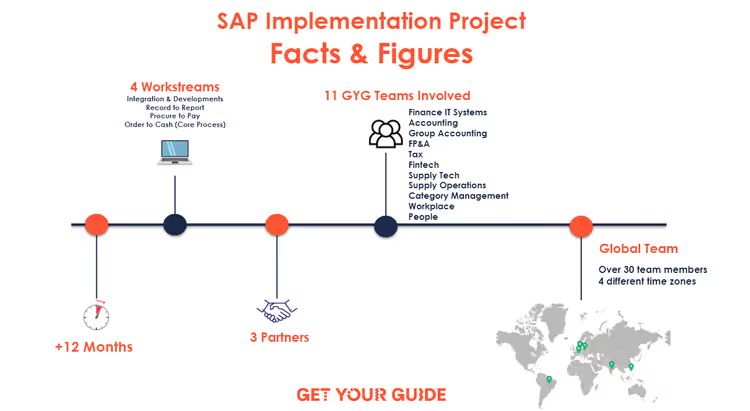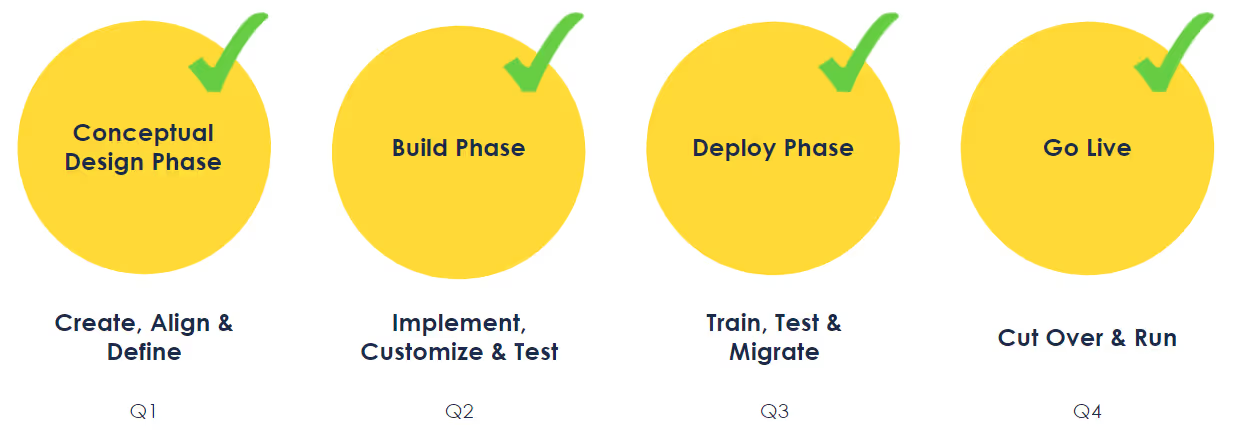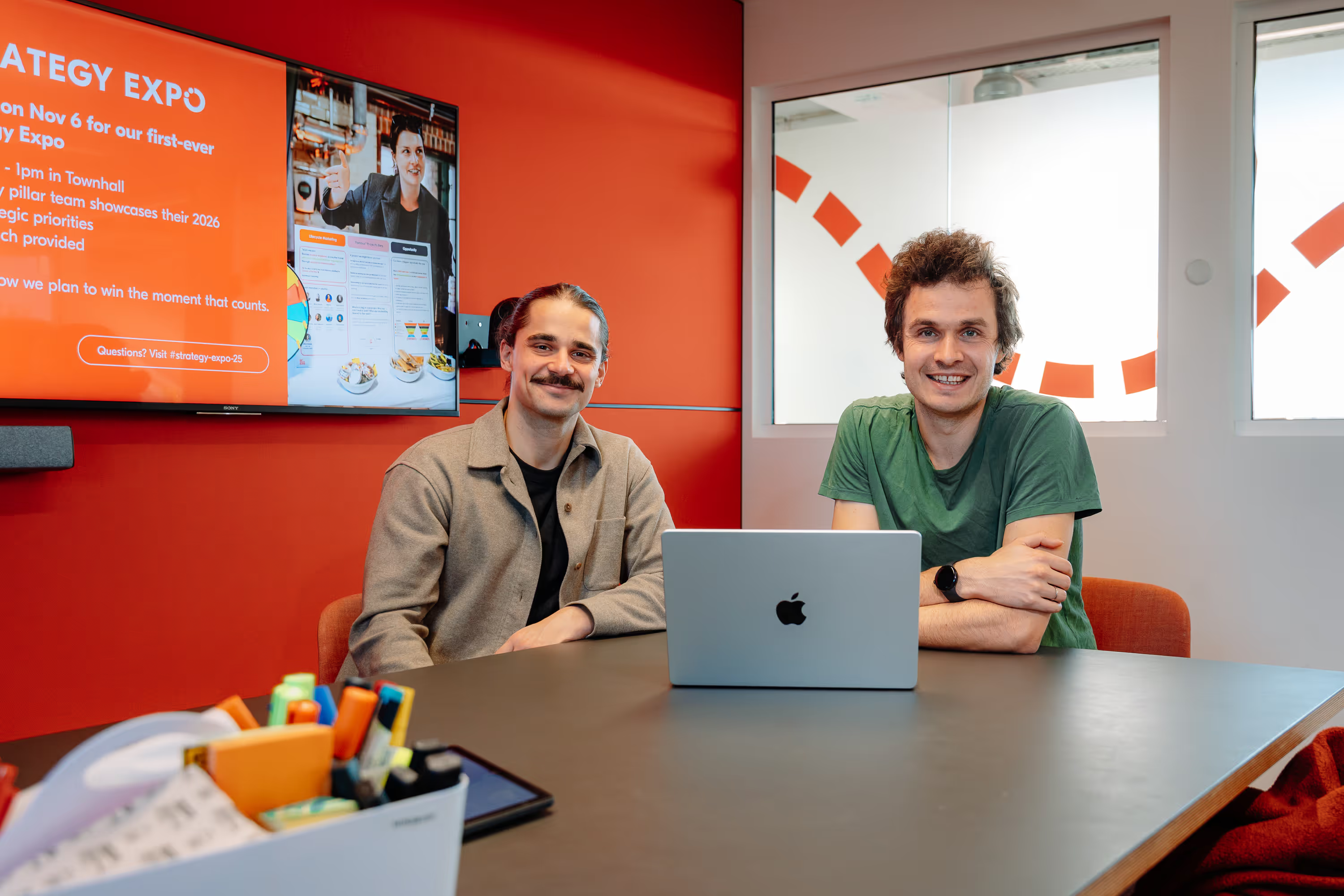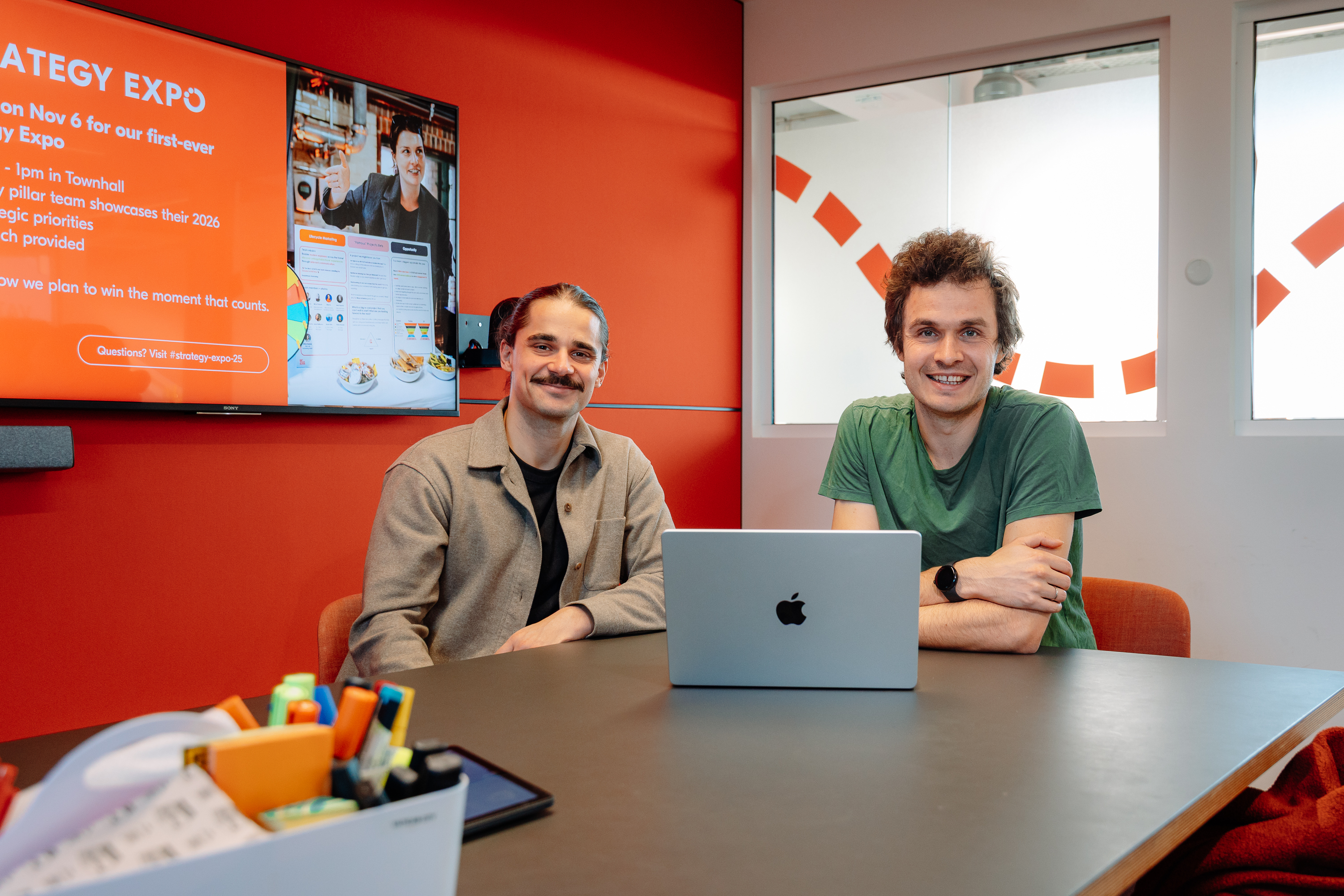Finance Transformation: Implementing SAP During Covid-19
Let’s imagine a time machine has finally been invented and rewind to 2019.

Key takeaways:
Leonardo Rodrigues, Head of Finance Systems at GetYourGuide, on the two-year journey to bring SAP to life, and the challenges of realizing such a complex project during the pandemic.
{{divider}}
Let’s imagine a time machine has finally been invented and rewind to 2019. Everyone is living their best lives and the travel business is booming. GetYourGuide is implementing its 10x growth strategy, and all teams are working hard to deliver our best ever results.
The mission of the Finance Systems team is to provide reliable solutions that translate operational processes into financial data while enabling strategic decision-making. However, the tools we were using back in 2019 didn’t enable us to be flexible and scalable enough as our business needed.
To solve this problem, we embarked on a Finance Transformation journey! In Q4 that year, our team went to the market to select what would become our new ERP system. After a series of workshops and tough discussions, we finally decided on SAP S/4HANA Cloud.
You know startups are all about fast execution, right? Naturally, we decided to start our implementation project right away at the beginning of 2020. As we were engaging all internal and external stakeholders to officially kick off the project, the world was hit by the COVID-19 pandemic. Quite suddenly, everything linked to travel literally stopped.
In the year that followed we held many renegotiation and replanning sessions, but ultimately decided that it was time to push. We strongly believed in our execution power and committed to several key initiatives that would make us come out of the pandemic even stronger. To that end, later that year the SAP Implementation project was back on track!
The SAP Challenge
I’ve been working in the ERP industry for over a decade but had never done an SAP implementation before – and nor had anyone else in the Finance team. When we tried to define our Project Plan V0, it was clear we had a lot to learn. With that in mind, here are our main takeaways.
Lesson #1: Build An Inhouse Team
No matter how experienced a consultant team you can find, it’s crucial to build an in-house team to drive your project forward. Here’s why:
- An ERP system will reflect the business processes your company has in place – and deliver new ones to solve existing needs. As obvious as it might sound, no one knows your business better than your own employees.
- Such an implementation might take several months or even years. A lot of knowledge will be generated that you’ll want to keep internally once the project is over and the consultants are gone
- Cost-wise, the more work you can do internally, the fewer consulting hours you pay.
Now that the Finance Systems team was built, it was time to structure the remaining parts of the project team.
Lesson #2: Engage Your Business Stakeholders
In our initial SAP implementation, we’d decided to stick mostly with core finance processes and add only a few things on top. However, an ERP system works just like a company in real life: the result of every department’s work ends up in Finance and Accounting. In an ERP, transactions posted in other modules will, at some point, also end up in your Accounting books.
What that teaches you is that no ERP implementation will ever be a Finance project alone. You must engage all your relevant business stakeholders and have them as part of your team from the start. To support this, GetYourGuide made SAP a company OKR and senior leadership ensured buy-in and resource allocation from all required teams.
Time for the next step in the plan: bring in the experts!
Lesson #3: It’s Okay To Replan
Managing a project of this magnitude is already a complex task. Add on top a sudden shift to remote work, and we were suddenly faced with a whole new set of challenges. We looked at our project plan and realized that it needed to be re-worked: no one knew by then how remote work would be.
But at GetYourGuide one of our company values is Personal Growth: we test, fail, learn and grow. So why not take a step back and think of how we could make the most out of this situation? Remote work presented challenges, but also accelerated a shift towards a global network of service providers. This new scenario enabled us to onboard two additional implementation partners with teams spread across the globe in a much more cost-effective setup. Now we had a bigger team of experts and more areas of knowledge covered.
How The Project Was Structured
Having a fully remote team including three implementation partners was definitely a challenge. As we knew that additional coordination work would be required, we structured the project team in a way to facilitate engagement and communication among smaller teams.
Four workstreams were defined based on our main business processes:
- Record to Report: Responsible for all the basic Accounting-related setup in the system as well as for General Ledger, Accounts Payable, and Accounts Receivable processes.
- Order to Cash: Focused on the Revenue streams and the data flow between our marketplace and SAP.
- Procure to Pay: For the implementation of a new set of Indirect Procurement processes.
- Integrations and Developments: Serving all three other workstreams and being responsible for all the development work (interfaces, workflows, reports, etc).
Each work stream was led by a member of GetYourGuide’s Finance Systems team. These four individuals were ultimately responsible for coordinating work amongst all internal business stakeholders as well as a team of dedicated consultants.
Alongside this team, a technical project lead and project manager oversaw all four workstreams to ensure proper guidance and resource allocation, and to serve as escalation points for any blockers.

Project Phases
The project was split into four phases, each one lasting three months.

Design
This initial phase was broken down into a series of several (and I mean several) workshops with all business teams. The outcome was a list of processes documented in a blueprint explaining how their individual implementations would be carried out.
Build
By this stage having all business blueprints as starting points, this period saw the technical team undertake all implementation work, including system customizing and development.
Deploy
In this phase key users had contact with SAP for the first time, and the opportunity to test what had been implemented. Test waves consisted of unit, integration, and performance testing.
Go Live
After all testing is done and signed off, it’s time to move everything to Production. We split our Go Live into two steps:
- Technical Go Live: In this step, all customizing work was moved to Production. New interfaces were turned on and smoke tests were conducted to ensure proper system functionality.
- Business Go Live: All users onboarded and data migration was done.
Finally, in January 2022 GetYourGuide went live with SAP S/4HANA. This milestone marks the beginning of a journey that consists of enormous challenges and learnings, but that also unlocks a new era for Finance.
If you enjoy a challenge and want to be a part of our Finance Transformation journey, come join the team!


.jpg)




